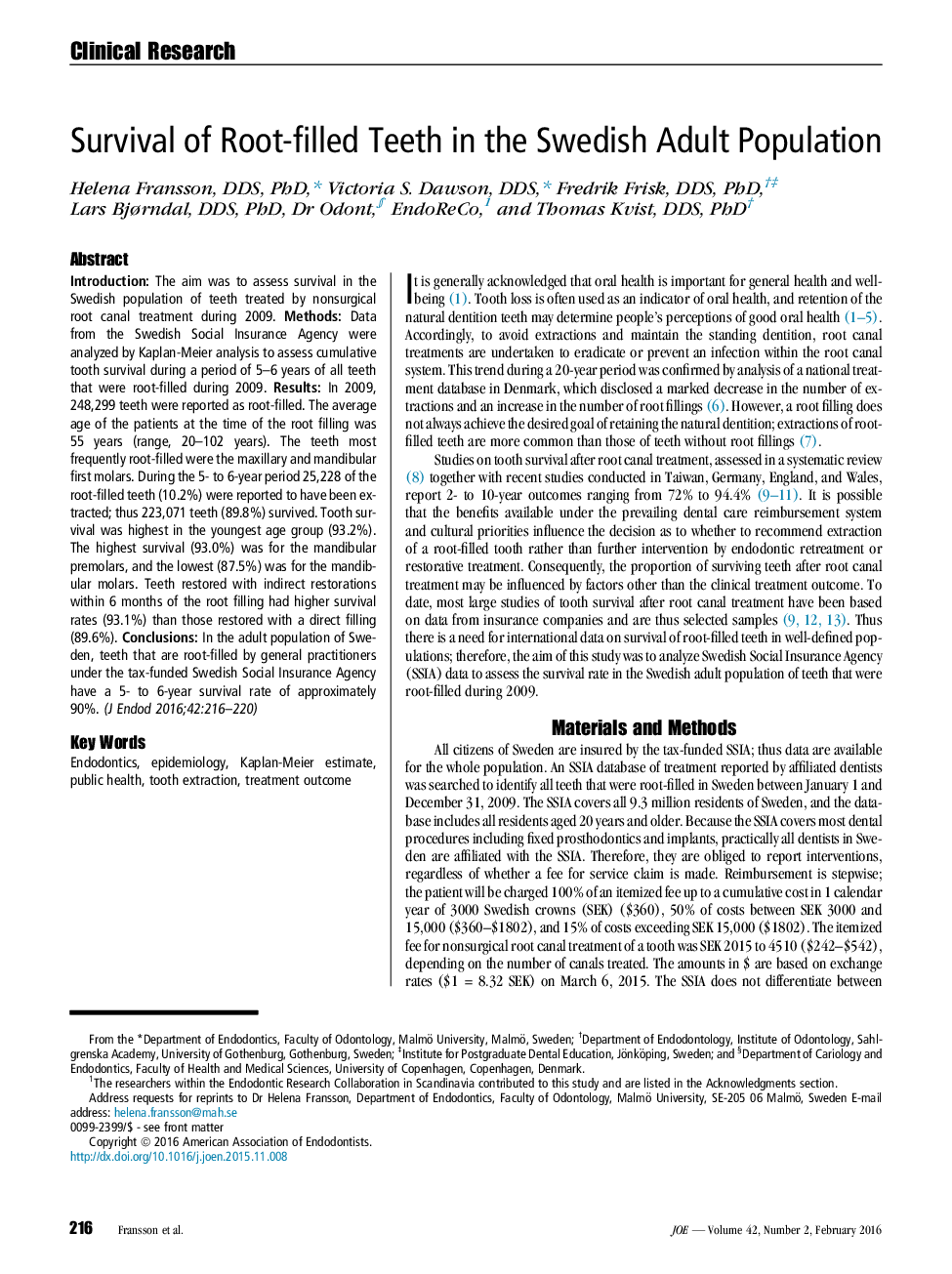| Article ID | Journal | Published Year | Pages | File Type |
|---|---|---|---|---|
| 3150039 | Journal of Endodontics | 2016 | 5 Pages |
IntroductionThe aim was to assess survival in the Swedish population of teeth treated by nonsurgical root canal treatment during 2009.MethodsData from the Swedish Social Insurance Agency were analyzed by Kaplan-Meier analysis to assess cumulative tooth survival during a period of 5–6 years of all teeth that were root-filled during 2009.ResultsIn 2009, 248,299 teeth were reported as root-filled. The average age of the patients at the time of the root filling was 55 years (range, 20–102 years). The teeth most frequently root-filled were the maxillary and mandibular first molars. During the 5- to 6-year period 25,228 of the root-filled teeth (10.2%) were reported to have been extracted; thus 223,071 teeth (89.8%) survived. Tooth survival was highest in the youngest age group (93.2%). The highest survival (93.0%) was for the mandibular premolars, and the lowest (87.5%) was for the mandibular molars. Teeth restored with indirect restorations within 6 months of the root filling had higher survival rates (93.1%) than those restored with a direct filling (89.6%).ConclusionsIn the adult population of Sweden, teeth that are root-filled by general practitioners under the tax-funded Swedish Social Insurance Agency have a 5- to 6-year survival rate of approximately 90%.
